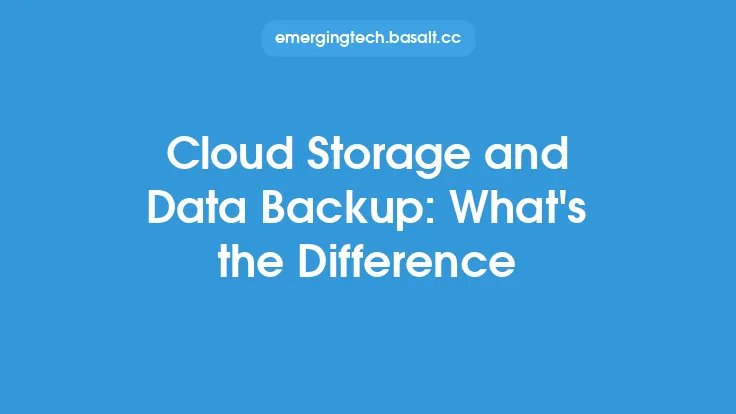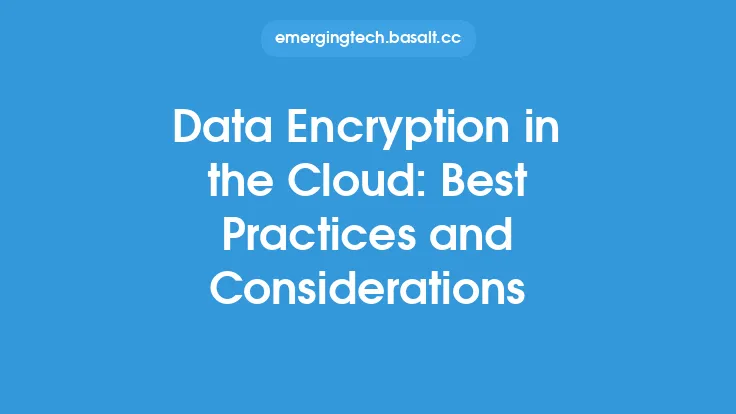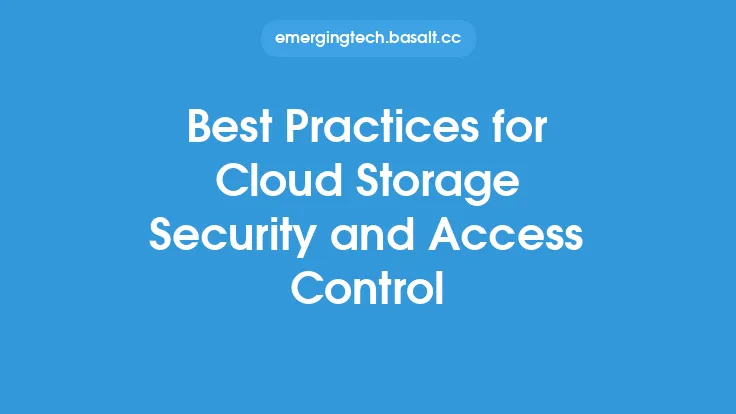Data durability and availability are two critical aspects of cloud storage that ensure the integrity and accessibility of stored data. In cloud storage, data durability refers to the ability of the storage system to preserve data over time, despite potential failures or disruptions. Data availability, on the other hand, refers to the ability of users to access their data when needed. Both durability and availability are essential for businesses and individuals who rely on cloud storage to store and manage their data.
Introduction to Data Durability
Data durability in cloud storage is achieved through various techniques, including data replication, erasure coding, and checksums. Data replication involves creating multiple copies of data and storing them in different locations, such as across multiple servers or data centers. This ensures that if one copy of the data becomes unavailable or corrupted, the other copies can be used to recover the data. Erasure coding is a technique that breaks data into smaller fragments and stores them across multiple devices, allowing the data to be reconstructed even if some fragments are lost or corrupted. Checksums, on the other hand, are digital signatures that verify the integrity of data, allowing the storage system to detect and correct errors.
Ensuring Data Availability
Data availability in cloud storage is ensured through various mechanisms, including load balancing, redundancy, and failover systems. Load balancing distributes incoming traffic across multiple servers, preventing any single server from becoming overwhelmed and ensuring that data remains accessible. Redundancy involves duplicating critical components, such as power supplies and network connections, to ensure that the storage system remains operational even in the event of a failure. Failover systems automatically switch to a backup system or server in the event of a failure, minimizing downtime and ensuring continuous access to data.
Data Replication Strategies
Data replication is a critical component of both data durability and availability. There are several data replication strategies used in cloud storage, including master-slave replication, peer-to-peer replication, and multi-master replication. Master-slave replication involves designating one server as the primary server (master) and replicating data to one or more secondary servers (slaves). Peer-to-peer replication involves replicating data between equal servers, allowing any server to accept updates and propagate them to other servers. Multi-master replication involves allowing multiple servers to accept updates and replicating data between them, ensuring that all servers have a consistent view of the data.
Erasure Coding and Data Recovery
Erasure coding is a technique used to ensure data durability by breaking data into smaller fragments and storing them across multiple devices. This allows the data to be reconstructed even if some fragments are lost or corrupted. There are several types of erasure coding, including Reed-Solomon coding, Low-Density Parity-Check (LDPC) coding, and XOR-based coding. Data recovery in cloud storage involves using these erasure coding techniques to reconstruct data in the event of a failure or data loss. This ensures that data remains available and accessible, even in the event of a disaster or major failure.
Redundancy and Failover Systems
Redundancy and failover systems are critical components of data availability in cloud storage. Redundancy involves duplicating critical components, such as power supplies and network connections, to ensure that the storage system remains operational even in the event of a failure. Failover systems automatically switch to a backup system or server in the event of a failure, minimizing downtime and ensuring continuous access to data. There are several types of failover systems, including automatic failover, manual failover, and semi-automatic failover. Automatic failover systems switch to a backup system or server without human intervention, while manual failover systems require human intervention to switch to a backup system or server.
Best Practices for Ensuring Data Durability and Availability
There are several best practices for ensuring data durability and availability in cloud storage. These include selecting a cloud storage provider that offers robust data durability and availability features, such as data replication and erasure coding. It is also essential to monitor storage system performance and adjust settings as needed to ensure optimal data durability and availability. Additionally, implementing data backup and disaster recovery procedures can help ensure business continuity in the event of a disaster or major failure. Regularly testing data recovery procedures can also help ensure that data remains available and accessible.
Conclusion
In conclusion, data durability and availability are critical aspects of cloud storage that ensure the integrity and accessibility of stored data. By using techniques such as data replication, erasure coding, and checksums, cloud storage providers can ensure data durability. Data availability is ensured through mechanisms such as load balancing, redundancy, and failover systems. By selecting a cloud storage provider that offers robust data durability and availability features and implementing best practices, such as monitoring storage system performance and implementing data backup and disaster recovery procedures, businesses and individuals can ensure that their data remains available and accessible.





